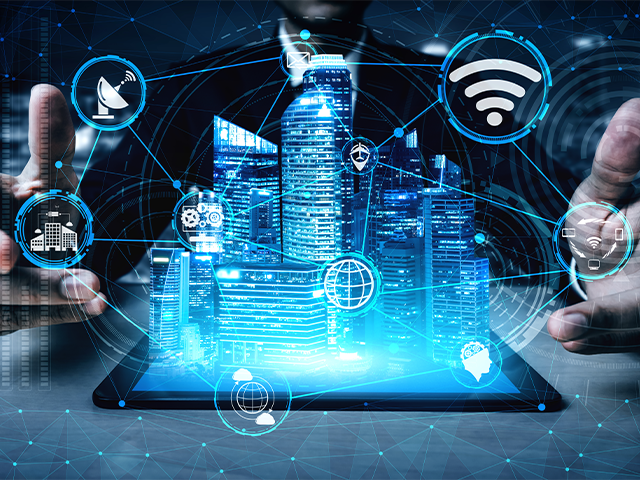Physical Address
304 North Cardinal St.
Dorchester Center, MA 02124
Physical Address
304 North Cardinal St.
Dorchester Center, MA 02124

In September 2020, in New York’s Union Square, the bright orange letters of the then new climate clock counted down the critical time window remaining for humanity to take action and save the world from climate chaos.
To remain under 1.5°C warming and prevent the worst effects of climate change from becoming irreversible, society was warned it had only seven years, 102 days, and counting to switch from fossil fuels to renewable alternatives to keep global emissions in check.
Two years down the line and carbon emissions are still rising and if we revisit the clock analogy, it currently stands at one minute to midnight – less according to many scientists. Indeed, António Guterres proclaimed in his COP27 opening speech that the global climate fight will be won or lost by the end of the decade.
We’ve already seen first-hand evidence of what he described as “climate hell”. So far this year southern US States were hit by powerful winter storms leaving millions without electricity, in March, Antarctica reported a heatwave, with temperatures some 70° higher than where they should be, this summer parts of the UK and mainland Europe reached temperatures in excess of 40°, and Pakistan has experienced super floods as a result of severe monsoons and melting glaciers.
Whilst geopolitical instability in Ukraine has exacerbated the situation by causing shortages in wholesale gas supplies and soaring energy prices, the conflict has also highlighted just how little progress the world has made in its transition to renewable energy sources. If we are serious about redressing climate change, the source, to a certain extent, is irrelevant. The world needs to consume less energy overall by:
Amidst all the despair, advances in IoT are offering a glimmer of hope because by fortuitous timing its heyday has arrived and could be the silver bullet needed to address climate change challenges once and for all. Interconnected devices (the crux of IoT) empower both businesses and individuals to lower their carbon footprint by giving them an easy means to measure the effectiveness of their existing energy management systems and take decisive action in line.
Embedded sensors can be used to monitor an array of factors, from temperature and humidity levels or total power usage, to assessing C02 and/or methane levels. According to the World Economic Forum, IoT technologies together with 5G connectivity offer the potential to reduce global carbon emissions by 15%.

IoT, however, is not a new technology. The concept has been around for the last 10 years with interconnected devices and applications prevalent in industry and consumables. Its true worth, however, is just coming to fruition thanks to 5G networks going mainstream and accelerations in AI innovation.
Yet thus far a high proportion of businesses, public sector ones in particular, have been reluctant to harness the benefits of IoT because of the perceived upheaval, disruption to service, costs involved etc versus the perceived gains. Installing IoT powered sensors in commercial premises has also historically been optional.
Now that the New Building Safety Act has come into force, proprietors of any mixed-use building must nominate someone to be responsible for harnessing data for due diligence. With these new safety new rules to abide by, together with soaring costs and the planned introduction of decarbonisation strategies, businesses adopting a “head in the sand” approach to the merits of IoT do so at their own peril.
A common misconception of any IoT deployment is the need for powerful Wi-Fi. The underpinning enabler to most IoT systems is cellular as it provides the trigger mechanism for device2device communication.
Providing the levels of coverage needed in commercial buildings running IoT is challenging though because a mobile signal is weakened by default as soon as it is taken indoors. Materials such as reinforced concrete, galvanized steel, tinted glass iron girders, insulation foam etc also hinder the transmission of mobile phone signals, particularly 5G ones, yet this is next generation network fuelling the IoT phenomena.
Larger organisations can overcome their signal challenges by implementing operator-connected DAS. Smaller businesses also need to address their energy usage, but they don’t have the same budgets or resources. The only way they can provide the levels of coverage needed is by taking the outside network indoors using supplementary equipment such as mobile repeaters.
Before even reaching the install phase, businesses must firstly assess the outdoor coverage situation as this will determine the type/number of repeaters needed and their configuration. This can be done by carrying out a mobile site survey but most of the readily available tools do not provide the hierarchical view needed. When deploying IoT, quality of service at device level is critical as this will depict the efficiency of the system and the reliability of the data captured.
Advances in IoT sensors and wireless connectivity along with augmented storage and data handling processes are clearly allowing businesses to adopt energy-efficient practices and use available resources more responsibly. But any IoT investment will be superfluous if the mobile coverage situation is not addressed at the same time.
If we are to leverage the merits of IoT for the greater good of the planet, then reliable cellular connectivity must be incremental to any IoT deployment. If it isn’t then many investments will not be fit for purpose due to self-created mobile dead spots.